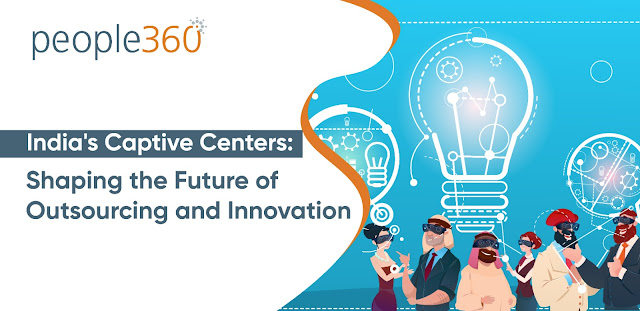India's Captive Centers: Shaping the Future of Outsourcing and Innovation
In a rapidly evolving global business landscape, India has emerged as a strategic hub for both outsourcing and innovation through the establishment of captive centers. These centers, also known as Global In-house Centers (GICs), are subsidiaries or extensions of international corporations located in India, aiming to harness the country's abundant talent pool, cost-effectiveness, and potential for innovation. This blog explores how India's captive centers are playing a pivotal role in shaping the future of outsourcing and innovation.
The Rise of Captive Centers: A Brief Overview
The concept of captive centers is not new, but in recent years, it has gained significant traction due to various factors. Companies across industries are recognizing the advantages of establishing their presence in India through these centers. This trend has shifted the focus from traditional outsourcing models to more collaborative and strategic partnerships.
Cost Efficiency and Talent Abundance
One of the primary reasons for the proliferation of captive centers in India is the cost advantage they offer. The country's lower labor costs compared to Western economies make it an attractive destination for companies looking to optimize their operational expenses without compromising on quality. Moreover, India boasts a large pool of skilled professionals, including engineers, data scientists, software developers, and business analysts, providing companies with a diverse range of expertise to tap into.
Driving Innovation through Collaboration
While cost efficiency remains a significant factor, captive centers are no longer solely about cost savings. These centers have evolved into innovation hubs, fostering collaboration between local talent and global teams. By leveraging India's skilled workforce, companies can drive innovation in product development, research, and technology.
Captive centers encourage cross-functional collaboration, knowledge sharing, and the exchange of best practices. The presence of a captive center in India enables companies to tap into a different perspective, harnessing the diverse experiences and insights of local employees. This blend of global expertise and local knowledge often results in creative problem-solving and the development of cutting-edge solutions.
Building a Competitive Advantage
Captive centers provide companies with a competitive advantage by enabling them to control their operations and intellectual property in-house. Unlike traditional outsourcing, where there might be concerns about data security and confidentiality, captive centers offer a higher level of control over sensitive information. This control enhances trust between the parent company and the captive center, leading to smoother collaboration and greater alignment with the company's strategic goals.
Case Studies: Real-world Impact of Captive Centers
Several global giants have already harnessed the potential of captive centers in India, showcasing their impact on both innovation and outsourcing. For instance, multinational technology companies like Microsoft and Google have established captive centers in India to tap into the country's technical talent. These centers not only support core functions but also drive innovation in areas such as artificial intelligence, machine learning, and cloud computing.
Financial institutions, too, have recognized the advantages of captive centers. Investment banks and financial services providers have set up captive centers in India to streamline operations, enhance customer service, and develop fintech solutions that cater to a diverse customer base.
Challenges and the Road Ahead
While the growth of captive centers in India is promising, it's not without challenges. Companies need to navigate cultural differences, time zone disparities, and communication barriers to ensure effective collaboration between their global and local teams. Additionally, as competition for top talent intensifies, attracting and retaining skilled professionals becomes a key priority for captive centers.
To address these challenges, companies must invest in robust talent development programs, foster a culture of innovation and inclusivity, and establish clear communication channels across their global operations.
Conclusion
India's captive center are reshaping the future of outsourcing and innovation. Beyond being cost-effective alternatives, these centers have become integral to the global operations of many corporations. They provide a platform for collaboration, knowledge exchange, and innovation, enabling companies to stay ahead in a dynamic and competitive market.
As India continues to evolve as a business destination, the role of captive centers will only become more pronounced. By embracing this model, companies can unlock the potential of India's skilled workforce and position themselves at the forefront of innovation while maintaining control over their operations and intellectual property. As the business landscape continues to transform, India's captive centers are poised to play a pivotal role in shaping the future of outsourcing and innovation on a global scale.




Comments
Post a Comment